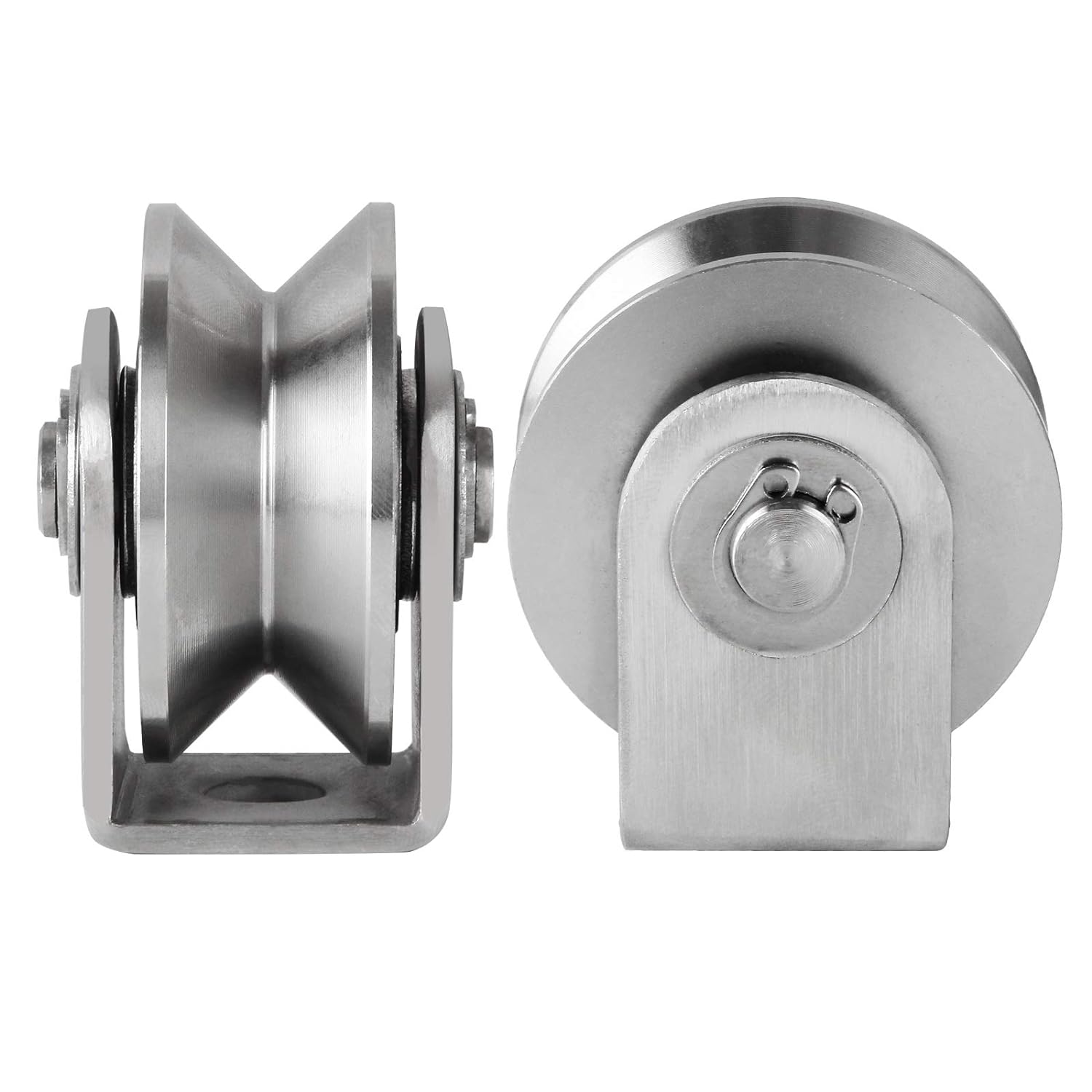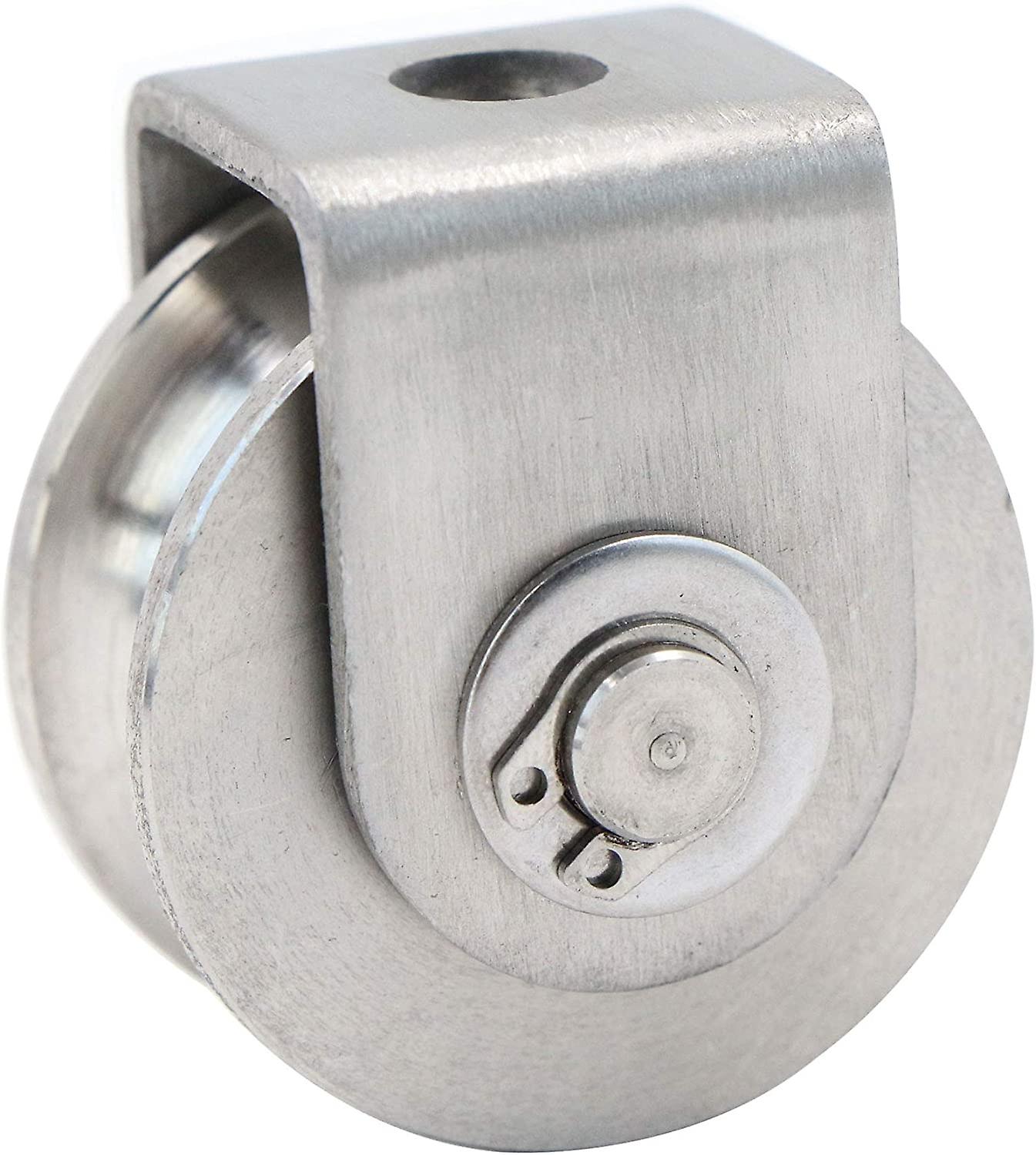Product Description
CUSTOMIZED CONVEYOR ROLLER (conveyor pulley,gravity roller/ power roller/ driven roller pulley)
DMC Roller supply different conveyor rollers including gravity roller, drive roller,drive pulley, Polyurethane (PU) covered roller, Buna Nitrile rubber(NBR) covered roller, Styrene Butadiene Rubber (SBR) covered roller, CHINAMFG rubber coating roller , Silicon rubber, NR and CR etc
The conveyor rollers are used in a variety of industries including food distribution, pharmacy,tobacco,clothing,postal express,logistic and distribution,rubber and airport industries.
We could process conveyor roller up to 6,000mm in-house and max. 12,000mm long by outsourcing. All of customized conevyor rollers are available, and we could also meet some special requirements for friction and anti-static performance, etc. In addition, we provide inspection report for every critical conveyor roller.
Description:
|
Production type |
custom OEM,ODM production conveyor (system), chain conveyor |
|||
|
Roller Materail |
SAE1571, 1045, S355J2H, Q345B, 38CrNiMo, 40Cr, Stainless steel 304L/316L and aluminum 6063&6061T651, etc. baggage handling system heavy steel rolls; quality rolls |
|||
|
Types |
idler roller, drive roller, chain roller ,tapered roller,free roller, all of Logistics equipment roller for mine conveyor |
|||
|
Shapes |
flat roll, cambered or crowned roller pulley, anilox roll |
|||
|
Standards |
customized, CEMA, TD-2, JIS, ISO small rollers steel rolls manufacturing |
|||
|
Surface Coating |
paint, powder coating, zinc plating, rubber coated solid steel rolls cylinder for machine |
|||
|
Supply Capacity |
>10,000pcs monthly complex roller logistics equipment, conveyor (system), chain conveyor |
|||
|
Assembly Service |
Available conveyor idler trough roller precision grooved roller /grooving roller |
|||
|
Application Fields |
logistics equipment, belt conveyor systems, automotive, parcel & baggage handling system, ecommerce , warehouse & distribution conveyor solution, converting machine, mine conveyor, food industry, wood processing, etc. |
|||
|
Package |
plywood box (Fumigation-free) Well-designed packaging is also very important for the qualified conveyor rollers, otherwise the conveyor pulley may be damaged in the loading/unloading process and transportation. roller |
|||
|
Also Named as |
conveyor idler, idler conveyor roller, conveyor belt roller, carrying idler, rubber idler roller, conveyor idler roller, idler pulley, rubber conveyor pulley, drum pulley, belt drive pulley, drum roller, crowned pulley, transport roller, carrier roller, conveying roller, conveyor tail pulley, belt conveyor head pulley, rubber lagging drum pulley, impact roller, etc. |
|||
|
Other Products |
industrial steel roller, rubber coated roller, aluminum cylinder, machined components, welding, sheet metal fabrication |
|||
QUALITY CONTROL
* Accept SGS and any other third party’s in-site inspection if necessary.
* Provide inspection report for each CTQ and critical part before delivery.
* Confirm the DFM with customer before sample production.
* Provide 8D report and CAR to client in case quality issue happens.
* Have regular maintenance schedule for all measuring tools.
* Strict controls and checkups are conducted on a regular basis.
* In addition, our concerning is not only part itself but also material localization, documentation of production and reasonable design of packaging for long distance transportation.
INSPECTIONS
Quality runs through the whole process from material to delivery.
We provide inspection report for each roller before shipment. The below sample reports are for your reference.
/* January 22, 2571 19:08:37 */!function(){function s(e,r){var a,o={};try{e&&e.split(“,”).forEach(function(e,t){e&&(a=e.match(/(.*?):(.*)$/))&&1
| Material: | Carbon Steel |
|---|---|
| Surface Treatment: | Baking Paint |
| Motor Type: | Frequency Control Motor |
| Installation: | Horizontal |
| Size: | Customer-Made |
| Transport Package: | Wooden Crate |
| Customization: |
Available
| Customized Request |
|---|

How do roller pulleys enhance the reliability and performance of conveyor systems?
Roller pulleys play a crucial role in enhancing the reliability and performance of conveyor systems. Here are several ways in which they contribute to the overall efficiency and effectiveness of these systems:
- Smooth Material Handling: Roller pulleys provide a smooth and controlled surface for materials to move along the conveyor system. The rotating rollers minimize friction and resistance, allowing for efficient and consistent material flow. This smooth handling reduces the risk of jams, bottlenecks, and product damage, resulting in improved operational reliability.
- Load Distribution: Roller pulleys distribute the weight of the conveyed materials across multiple rollers, evenly distributing the load. This load distribution prevents excessive stress on individual rollers, bearings, and other conveyor components. By distributing the load, roller pulleys help maintain the integrity of the conveyor system, minimize wear and tear, and extend the overall lifespan of the equipment.
- Reduced Power Requirements: The low rolling resistance provided by roller pulleys reduces the power requirements of the conveyor system. With less energy needed to move materials along the conveyor, the system operates more efficiently, resulting in lower energy consumption and reduced operating costs.
- Flexibility and Adaptability: Roller pulleys offer flexibility and adaptability in conveyor system design. They can be configured to accommodate various layouts, including straight sections, curves, and inclines. Roller pulleys with specialized features, such as tapered rollers or grooved rollers, can be utilized to handle specific material handling requirements. This adaptability allows for the efficient customization of conveyor systems to suit different applications and operational needs.
- Easy Maintenance: Roller pulleys are designed for easy maintenance and replacement. They are typically accessible and can be quickly replaced when necessary. Routine maintenance tasks, such as lubrication or cleaning, can be performed efficiently, minimizing downtime and maximizing the availability of the conveyor system.
- Compatibility with Automation: Roller pulleys are compatible with various automation technologies, such as robotics and automated guided vehicles (AGVs). They can seamlessly integrate with these systems, enabling the automation of material handling processes. Roller pulleys ensure precise movement and alignment, allowing for smooth interaction between the conveyor system and automated equipment.
- Scalability: Roller pulleys facilitate the scalability of conveyor systems. Additional roller pulleys can be easily incorporated to extend the length of the conveyor or accommodate increased material flow. This scalability allows for the efficient expansion or modification of conveyor systems as operational requirements evolve.
By providing smooth material handling, load distribution, reduced power requirements, flexibility, easy maintenance, compatibility with automation, and scalability, roller pulleys significantly enhance the reliability and performance of conveyor systems. They optimize material flow, minimize downtime, and contribute to the overall productivity of logistics and manufacturing operations.

Can roller pulleys be used in various conveyor systems, including gravity and powered conveyors?
Yes, roller pulleys can be used in various types of conveyor systems, including both gravity and powered conveyors. Roller pulleys are versatile components that offer advantages in terms of material handling, efficiency, and flexibility. Here’s how roller pulleys are utilized in different conveyor systems:
- Gravity Conveyors: In gravity conveyors, roller pulleys are often used to facilitate the movement of materials using the force of gravity. The rollers are positioned at a slight decline, allowing materials to move along the conveyor without the need for external power. Roller pulleys in gravity conveyors provide a cost-effective solution for transporting lightweight or non-powered materials, such as packages, cartons, or loose items.
- Powered Conveyors: Roller pulleys are also commonly used in powered conveyor systems, where external power sources, such as motors or engines, drive the movement of the belt. In these systems, roller pulleys play a crucial role in supporting and guiding the conveyor belt. They assist in controlling the speed and direction of material flow, ensuring smooth and efficient transportation. Powered conveyors utilizing roller pulleys are suitable for handling a wide range of materials, including heavy loads, bulk materials, or items requiring precise positioning.
- Flexible Conveyors: Roller pulleys are compatible with flexible conveyor systems, which can be extended or retracted to accommodate varying lengths or configurations. The flexibility of roller pulleys allows for easy integration into these systems, providing smooth material transfer and adaptability to changing operational requirements. Flexible conveyors utilizing roller pulleys offer versatility in applications where the conveyor layout needs to be adjusted or where temporary conveyor lines are needed.
- Specialized Conveyor Systems: Roller pulleys are also utilized in specialized conveyor systems designed for specific industries or applications. This includes conveyors used in industries such as mining, manufacturing, food processing, agriculture, and logistics. Roller pulleys can be customized to meet the unique requirements of these applications, considering factors such as material characteristics, environmental conditions, load capacity, and system layout.
Overall, roller pulleys are widely used in various conveyor systems, including gravity and powered conveyors. Their versatility, reliability, and adaptability make them an essential component for efficient material handling across a diverse range of industries and applications.

How does the design of rollers on a roller pulley impact its performance?
The design of rollers on a roller pulley plays a crucial role in determining its performance and effectiveness in conveyor systems. Various design factors can impact the performance of rollers. Here are some key aspects to consider:
- Roller Material: The choice of roller material affects factors such as durability, friction, and resistance to wear. Common materials used for rollers include steel, stainless steel, plastic, and rubber. Each material has its own advantages and suitability for specific applications.
- Roller Diameter: The diameter of the roller affects the contact area with the conveyor belt. Larger diameter rollers distribute the load over a larger surface area, reducing the pressure on the belt and minimizing the risk of belt damage. Smaller diameter rollers, on the other hand, may be suitable for applications with limited space or for conveying smaller materials.
- Roller Surface: The surface of the roller should be designed to reduce friction and promote smooth material movement. It should be smooth, free from sharp edges or protrusions that could damage the conveyor belt. Additionally, certain surface patterns or coatings can enhance grip and prevent material slippage.
- Roller Bearings: The type and quality of roller bearings are critical for smooth rotation and longevity of the roller pulley. High-quality bearings reduce friction, improve efficiency, and minimize maintenance requirements. Sealed or lubricated bearings can also enhance performance by protecting against contamination and reducing wear.
- Roller Configuration: Roller pulleys can feature various roller configurations, such as straight rollers, tapered rollers, or impact rollers. The choice of configuration depends on the specific application requirements, such as redirecting materials, reducing impact forces, or maintaining proper belt tracking.
- Roller Spacing: The spacing between rollers affects the overall support and stability of the conveyor belt. Optimal roller spacing ensures even weight distribution and prevents excessive sagging or stretching of the belt. It also helps to minimize the risk of material spillage or entrapment between rollers.
The design of rollers on a roller pulley is a critical factor in achieving optimal conveyor performance. By considering aspects such as roller material, diameter, surface, bearings, configuration, and spacing, the design can be tailored to meet specific application requirements, ensure smooth material movement, and enhance the overall efficiency and reliability of the conveyor system.


editor by CX
2024-04-25